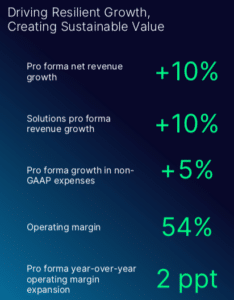Tech infrastructure is a foundational component of delivering superior customer and employee experiences, according to Balaji Kumar, Citi’s Head of Global Technology Infrastructure.
“Citi has been in this journey for the past few years where we have continued to modernize our applications in our data centers,” he told Traders Magazine.

On Monday, October 28, Citi announced a multi-year agreement with Google Cloud that focuses on modernizing Citi’s technology and infrastructure with cloud technology and artificial intelligence (AI).
“A partnership with Google Cloud is an extension of this strategy to the public cloud, where applications can take advantage of modern infrastructure components that provide standardization, scalability and security,” Kumar commented.
“This in turn unlocks the ability to offer improved digital products, streamline employee workflows, and improve automated provisioning of underlying infrastructure,” he said.
Through the collaboration, Citi will migrate multiple workloads and applications to Google Cloud’s secure and scalable infrastructure.
By modernizing its technology infrastructure on Google Cloud, Citi will unlock the ability to offer improved digital products, streamline employee workflows, and run high-performance computing (HPC) and analytics platforms.
This includes using advanced HPC capabilities to facilitate the execution of millions of computations daily in Citi’s Markets business.
As part of the agreement, Citi will also use Google Cloud’s Vertex AI platform to deliver generative AI capabilities across the company.
With Google Cloud, Citi will be able to fuel its generative AI initiatives related to developer toolkits, document processing, and digitization capabilities to empower customer servicing teams.
“We believe that Gen AI has the potential to revolutionize the banking industry by enhancing efficiencies, automating repetitive tasks, and enabling better decision-making,” Kumar said.
“And at Citi, we are focused on ensuring that we use Gen AI to support initiatives that align with three important priorities: improving safety and soundness, enabling revenue growth and the client experience and driving efficiencies for the bank,” he added.
Google Cloud offers a powerful, fully integrated and optimized AI stack with its own planet-scale infrastructure, custom-built chips, generative AI models and development platform, as well as AI-powered applications, to help organizations transform.
Customers in more than 200 countries and territories turn to Google Cloud as their trusted technology partner.
Google Cloud’s secure infrastructure empowers financial institutions to confidently embrace digital transformation while safeguarding sensitive data and meeting stringent regulatory, policy, and business requirements.
This robust foundation is built with a defense-in-depth approach, incorporating multiple layers of security such as data encryption at rest, in transit, and in use with Confidential Computing.
Google Cloud also meets key industry standards through comprehensive compliance certifications like PCI DSS, ISO 27001, and SOC 2.
“Through the collaboration, we will migrate multiple workloads and applications to Google Cloud’s secure and scalable infrastructure,” Kumar said.
“As a global provider of financial products, a partnership with another global technology provider like Google Cloud enables Citi to meet our client’s local needs across the markets we operate in,” he said.
“Citi will unlock the ability to offer improved digital products and empower customer servicing teams,” Kumar concluded.






















